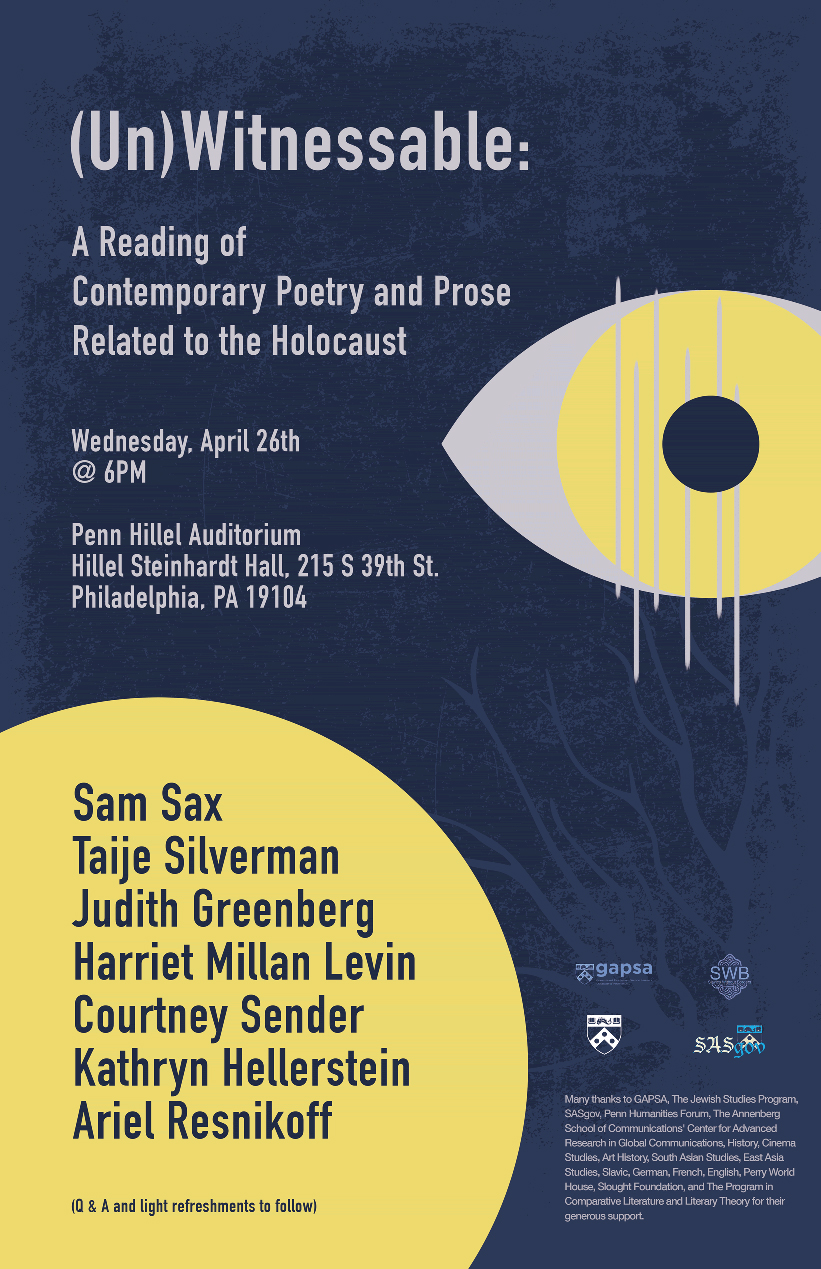Presented by Jewish Studies and Comparative Literature & Literary Theory Programs and Slavics Without Borders
Thursday, April 27th, 10:00am–5:00pm, Perry World House, 3803 Locust Walk
PANELS
Full Conference Schedule
Thursday, April 27th, 5:30pm, Slought, 4017 Walnut St.
KEYNOTE ADDRESS
Witnessing and Remembering the Holocaust in Belarus
Anika Walke (Washington University St. Louis)
The fields of Holocaust and trauma studies have been dominated by material and testimonial-based evidence. While these forms of witness capture the concentration camp narrative and illuminate aspects of the catastrophe in Western Europe, the East remains underdeveloped in popular knowledge and scholarly discourse.
This is in part due to the contrast between Nazi extermination strategies in the Western and Eastern regions--the programmatic, mechanized, and obsessively documented camp model versus the Holocaust administered by bullets, where the majority of victims were killed by shooting squads, often near their homes and even by people they knew. Beyond the workings of an alienated bureaucratic apparatus or oppressive ideology, the East tells a story of personal contact where every pull of the trigger bore the weight of an individual’s own decision to shoot.
Furthermore, the Holocaust in the East remained untold and even denied as a result of Stalin’s post-war anti-Jewish campaign, which among other official memory politics, rejected the fact that Jews were both targeted by and fought against the Nazis along with other Soviet nationalities. Thus, Jews were neither soldiers, nor martyrs, leaving their story with no place in official Soviet discourse.
This conference seeks to investigate the (un)witnessed and (un)witnessable atrocities in the East--the vast territory of the Soviet Union as well as the eastern regions of Poland. In the absence of concrete records and even material remains, we ask: How can we understand, represent, and analyze the crimes of Nazi persecution in these regions? How do we make sense of Eastern monumentalizationand memorial practices or their absence? How do contemporary local political attitudes in the East and globally influence the narrative and cultural production surrounding the past? And how might literature and passed down ancestral narratives help re-imagine this traumatic past haunting archives and history books?



